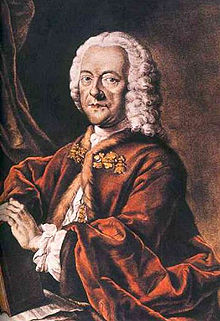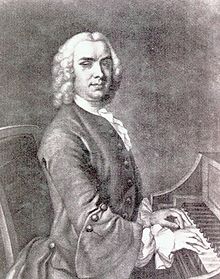One of the most bewildering parts of the Just Flutes catalogue is the Baroque section. All the titles seem to be the same, there are a great many composers who wrote a great many sonatas, and there are just so many editions to choose from! No wonder it’s confusing! This is a golden age of flute writing though and some of our most wonderful music comes from this period.

So, everyone needs Baroque music in their library, and there is no better place to start than with JS Bach. There’s one small problem – just how many sonatas did he actually write? The authentic ones – in B minor, E minor and E major – are essential repertoire for any flute player, but the E flat major and G minor sonatas which are now attributed to his son CPE Bach should also be on your shelf. The other ‘must-haves’ from this period are 11 Sonatas Op 1 by Handel, which are wonderfully varied and approachable, not to mention difficult!
These are great works so it is important that you choose the right edition to play from. Composers from this period did not write any performance directions (dynamics, slurs or ornaments) into their music, so editors add markings of their own – and you might not necessarily like what you see on the page. Fashions change – for example the Rampal editions of the 1960s were wonderful when they were done, but now they seem too complicated and fussy. The best editions are those called “urtext” which means unedited, and the catalogue usually recommends Barenreiter. Although more expensive, everything is as authentic as possible and for core repertoire such as Bach and Handel it really does pay to spend the extra money if you can. There are no unnecessary markings in these books, so you can become your own editor which is much more fun!
Choosing what to put on your shelf from the other composers is a matter of personal taste and can be an exciting voyage of discovery. Here are some of my favourites to start you off, and I hope you will enjoy them as much as I do!
CPE Bach actually wrote many more flute sonatas than his father. The G major Sonata Wq 133 Hamburger Sonata is one of the nicest. It is unusual as it has only two movements but the charm of the Allegretto contrasts beautifully with the hectic Rondo. The short link passage is a great place to try out your ornamentation skills too.

GF Telemann is another composer who is central to this period. He was prolific so there is a great deal of choice. The volume of Sonatas TWV 41 from “Der Getreue Musickmeister” published by Hortus Musicus contains 4 contrasting works, which will delight and entertain both you and your audience. The brooding F minor Sonata is the most difficult with its dark emotional undercurrent but the most famous is the bright and cheery F major Sonata, which also works very well on the piccolo.
The French composer Michel Blavet is one of my favourites from this period. He was a flute player himself and his writing shows a great sympathy for our instrument. His 6 Sonatas Op 2 (Volume 1, Volume 2) are the best-known and for good reason. Blavet had a gift for melody and his tunes are quite often breathtakingly beautiful. The faster movements have an appealing vitality and can be deceptively tricky. All 6 sonatas are good but if I had to choose one, it would be No 4 in G minor “La Lumagne”, which pairs 2 of the most lovely slow movements with three elegant dances.
Another wonderful French Sonata is Jean-Marie Leclair’s Sonata in G major Op 2 No 5. This is such a sunny work and it would certainly light up the start of any recital. It has four movements, opening with an elegant Andante, followed by a sparkling Allegro, then an almost jazzy Gavotte and ending with a vibrant Allegro assai. This is a really exciting flute-playing challenge!

More tuneful music comes from the English composer John Stanley, especially in his Six Solos for a German Flute Op 4. At the opposite end of the spectrum from Leclair, these are short and sweet, simple and uncomplicated – Stanley writes real 18th Century ‘easy-listening’! The first Solo in A minor epitomises his style, a lyrical Siciliana, a rhythmic Allegro and a major key Minuet are all quite delightful.
Representing Italy is Vivaldi with his 6 sonatas entitled “Il Pastor Fido” Op 13. These have lost popularity in recent years and it is true that they are straightforward works that lack the real vibrancy of his concertos. However, I find them all quite tuneful – they are by Vivaldi after all!
No round-up of this period would be complete without mentioning Quantz, and Rachel Brown’s recent edition of the 12 Sonatas written for Frederick the Great (Volume 1, Volume 2) is another ‘must have’. This is a great example of music really well edited. The wealth of information covered in her performance notes applies not only to these works but also to the performing of Baroque music in general so it’s a really valuable resource as well as lovely music. Every flute player should have a copy!
